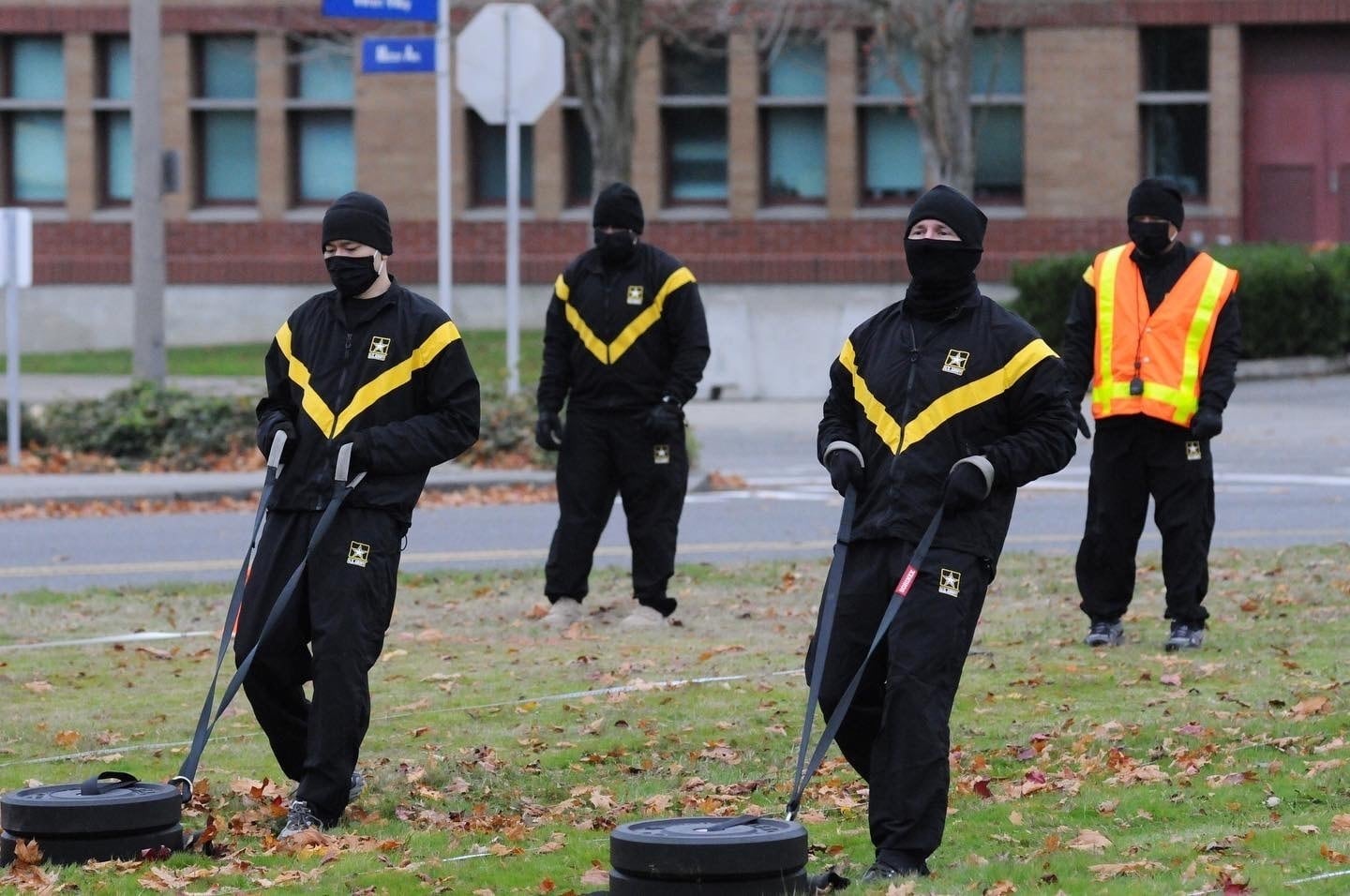The Army launched a study Monday at Fort Bragg, North Carolina, to evaluate alternatives to the infamous “tape test,” the Center for Initial Military Training said in a news release.
For the past 30 years, the Army has used “body fat standards,” also known as the “tape test,” as a metric for determining a soldier’s physical fitness and readiness.
The current tape test uses tape measurements of a soldier’s key areas of circumference, plugged into a mathematical formula, to determine body fat percentage. This method has come under fire from critics who argue that it can overestimate the body fat of fit soldiers while underestimating the body fat of soldiers who are out of shape.
The new CIMT study could introduce more technologically advanced methods of determining a soldiers’ body mass.
“It has been more than 30 years since the Army first started using body fat standards in place of height and weight tables,” the release reads. “A re-examination of the force is needed as the Army’s physical readiness programs evolve to reduce injuries and empower Soldiers to perform basic Soldier tasks.”
From Oct. 18 through Oct. 29, researchers are assessing potential changes to measuring body mass by comparing results of the older tape test against newer methods to determine the body composition of soldiers.
RELATED

These results will then be compared to the soldiers’ scores on both the Army Combat Fitness Test and the Army Physical Fitness Test.
The study will use four measurement techniques, including the traditional AR 600-9 tape test. Newer methods include a dual-energy X-ray absorptiometry test to measure bone density, along with three-dimensional total body scanning, and a bio-electrical impedance analysis, both of which measure body fat to lean mass.
Researchers will then compare the body mass calculations of the traditional tape test to the three newer methods, along with the performance of soldiers on the ACFT and APFT.
Sergeant Major of the Army Michael Grinston told Army Times in September that the point of the study will be information gathering, and nothing, including keeping the tape test intact, is being ruled out.
“I don’t think there’s any appetite to say: ‘Hey, we want the Army to carry more body fat.’ But what are those height and weight tables? Do we have the metrics right? Is the tape test still a valid test?” Grinston said. “Their initial brief to me several months ago said that the tape test is actually pretty good. It’s actually more lenient than a BodPod, but that’s all going to come out with the study.”
Army Times reported in July that the study would include more than 2,000 active-duty soldiers, with at least one-third being women. Also, the sample will be “representative of diverse backgrounds, including age, gender, race/ethnicity, MOS and duties.”
If needed, the release stated, additional sites around the Army will be selected to ensure that the study results are “inclusive of a diverse population.”
The findings of the study are expected to be reported to Army senior leadership in March 2022.
James R. Webb is a rapid response reporter for Military Times. He served as a US Marine infantryman in Iraq. Additionally, he has worked as a Legislative Assistant in the US Senate and as an embedded photographer in Afghanistan.










